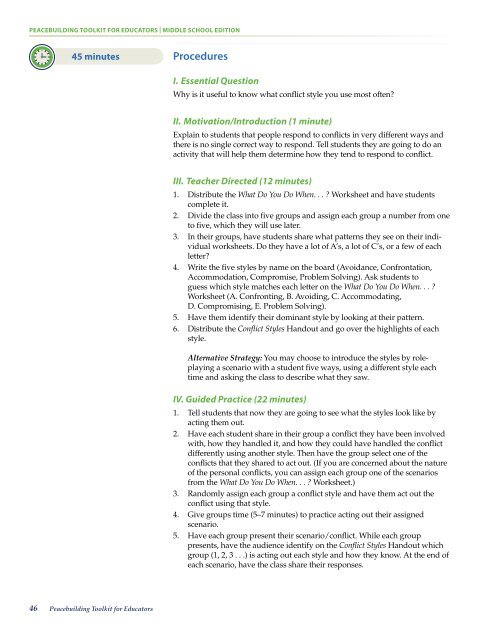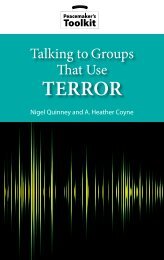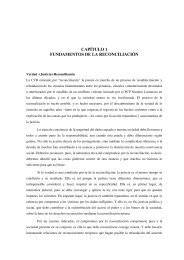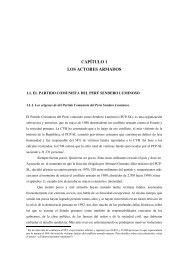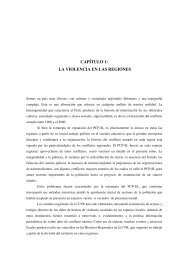Download PDF (5.43 MB) - ReliefWeb
Download PDF (5.43 MB) - ReliefWeb
Download PDF (5.43 MB) - ReliefWeb
You also want an ePaper? Increase the reach of your titles
YUMPU automatically turns print PDFs into web optimized ePapers that Google loves.
peacebuilding toolkit for educators | middle school edition45 minutesProceduresI. Essential QuestionWhy is it useful to know what conflict style you use most often?II. Motivation/Introduction (1 minute)Explain to students that people respond to conflicts in very different ways andthere is no single correct way to respond. Tell students they are going to do anactivity that will help them determine how they tend to respond to conflict.III. Teacher Directed (12 minutes)1. Distribute the What Do You Do When. . . ? Worksheet and have studentscomplete it.2. Divide the class into five groups and assign each group a number from oneto five, which they will use later.3. In their groups, have students share what patterns they see on their individualworksheets. Do they have a lot of A’s, a lot of C’s, or a few of eachletter?4. Write the five styles by name on the board (Avoidance, Confrontation,Accommodation, Compromise, Problem Solving). Ask students toguess which style matches each letter on the What Do You Do When. . . ?Worksheet (A. Confronting, B. Avoiding, C. Accommodating,D. Compromising, E. Problem Solving).5. Have them identify their dominant style by looking at their pattern.6. Distribute the Conflict Styles Handout and go over the highlights of eachstyle.Alternative Strategy: You may choose to introduce the styles by roleplayinga scenario with a student five ways, using a different style eachtime and asking the class to describe what they saw.IV. Guided Practice (22 minutes)1. Tell students that now they are going to see what the styles look like byacting them out.2. Have each student share in their group a conflict they have been involvedwith, how they handled it, and how they could have handled the conflictdifferently using another style. Then have the group select one of theconflicts that they shared to act out. (If you are concerned about the natureof the personal conflicts, you can assign each group one of the scenariosfrom the What Do You Do When. . . ? Worksheet.)3. Randomly assign each group a conflict style and have them act out theconflict using that style.4. Give groups time (5–7 minutes) to practice acting out their assignedscenario.5. Have each group present their scenario/conflict. While each grouppresents, have the audience identify on the Conflict Styles Handout whichgroup (1, 2, 3 . . .) is acting out each style and how they know. At the end ofeach scenario, have the class share their responses.46 Peacebuilding Toolkit for Educators


